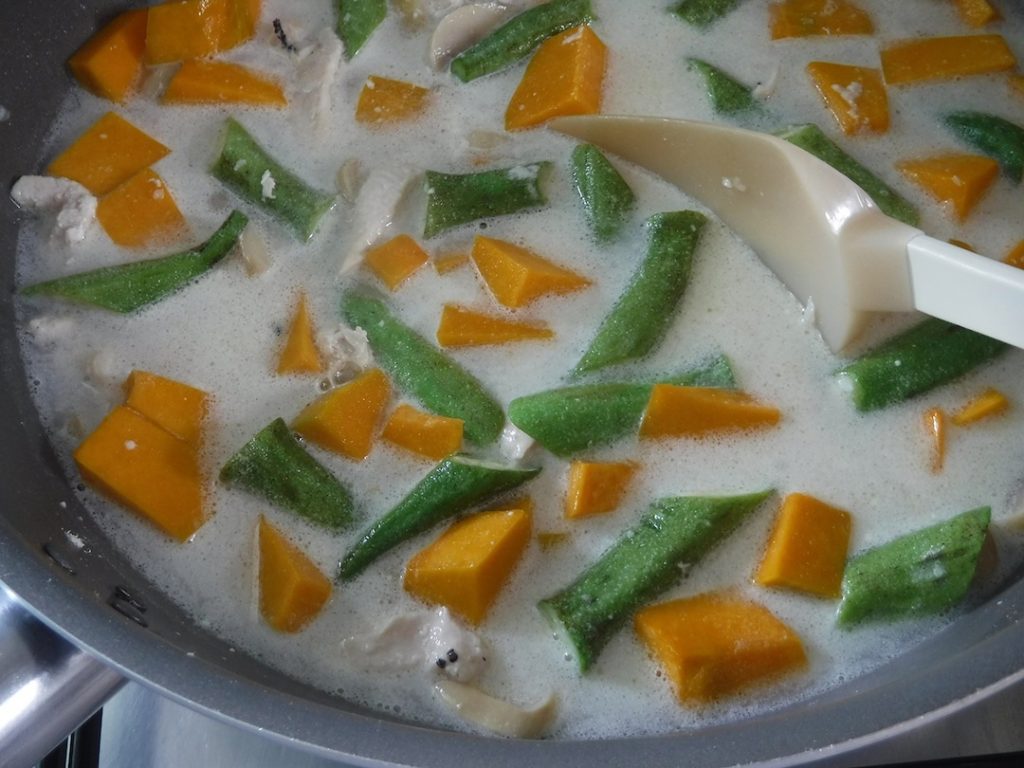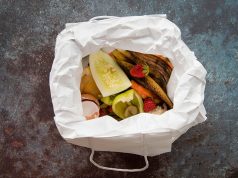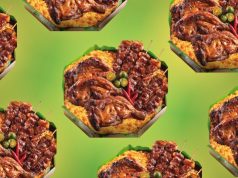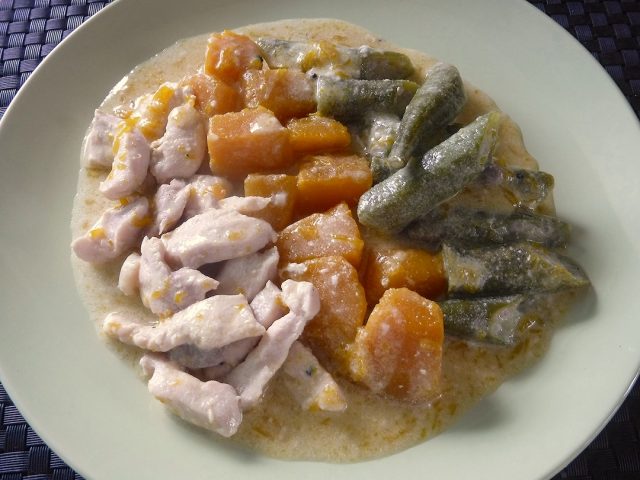
When I was a child, two of the vegetables that I wanted nothing to do with were ampalaya (bittergourd) and squash. Ampalaya was too bitter and I have yet to meet a kid who actually liked it, and squash was too mushy and “sandy” to the palate.
I used to wonder why my late dad loved Ginisang Ampalaya and why squash was his favorite vegetable in Pinakbet, although next only to okra, which we both loved. But when I became an adult, for some stroke of magic—or maybe having a strong consciousness on what is healthy and what is not—I learned to love Ginisang Ampalaya and to appreciate what “sandy” squash could do for me.
I started with Cream of Squash (or Pumpkin) Soup and graduated to Guinataang Kalabasa. But there is one vegetable that I still do not like—sitaw (stringbeans). I omit it from my Sinigang and Kare-Kare, and I would rather cook Adobong Kangkong than Adobong Sitaw. I figured I do not have to force myself to like it because there is no reason why I have to like all vegetables. One exception is alright.
So, recently, when I decided to make Guinataang Gulay for lunch, I combined two vegetables that I like, squash and okra, instead of the classic squash and sitaw combination, and cooked it with chicken. No red meat. Guinataang Kalabasa at Okra. Sounded good. Tasted good, too, when cooked.
Guinataang Kalabasa at Okra
Ingredients
2 Tbsps. vegetable oil
2-3 cloves garlic, minced
3 slices ginger, cut into small pieces
1 pc. onion, sliced thinly
1 pc. chicken breast, cut into strips
1 wedge squash, peeled, deseeded and cut into small pieces
1 bunch okra, trimmed and sliced into two on the bias
1 can coconut milk
salt and pepper to taste
Directions
1. Heat vegetable oil in pan. Add garlic, ginger and onion, and sauté until aromatic.

2. Add chicken strips and cook until chicken is slightly cooked.
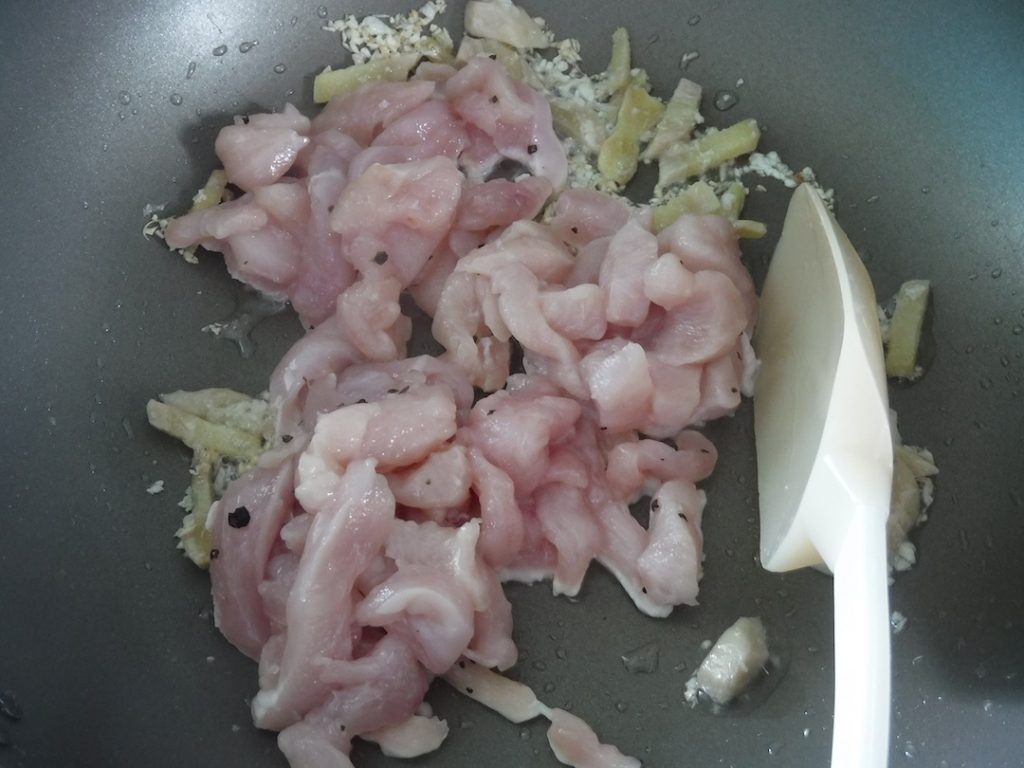
3. Add squash and okra.
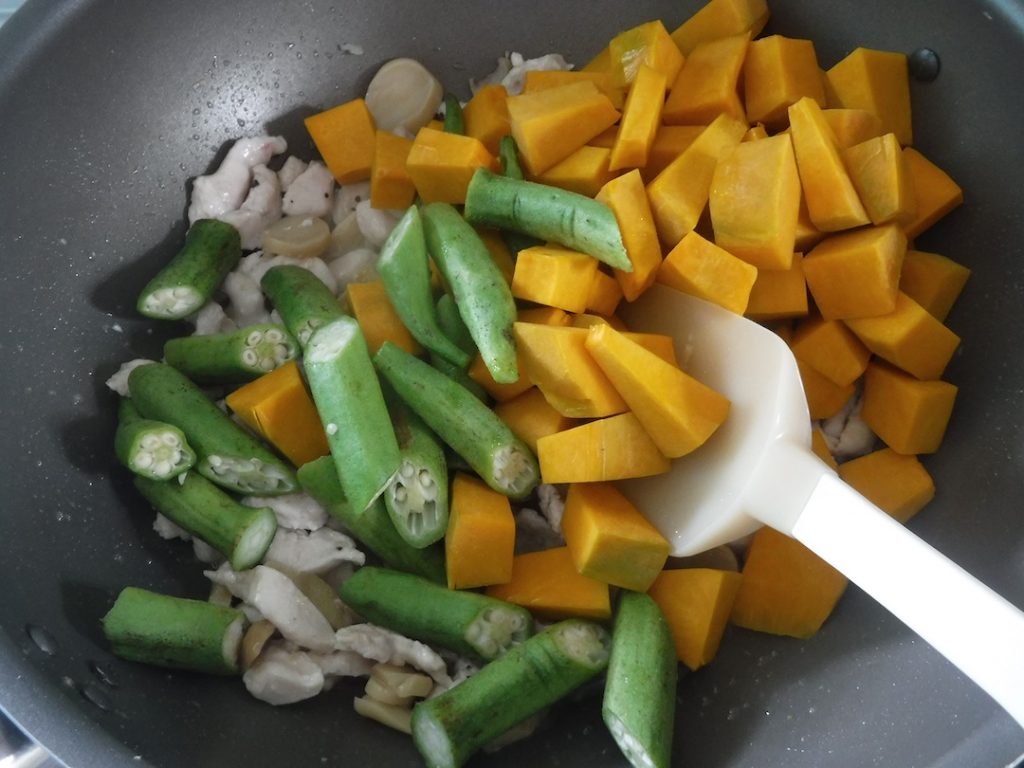
4. Pour in coconut milk. Simmer until done, seasoning with salt and pepper to taste.
